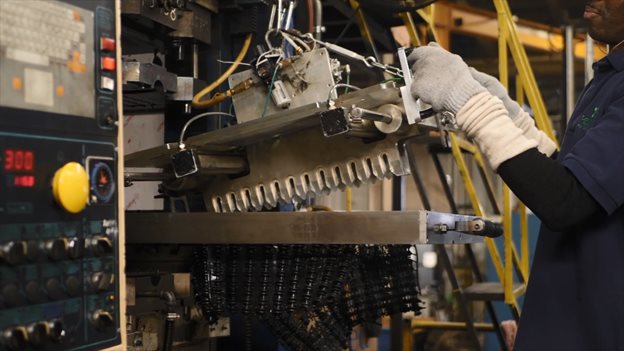Rubber Injection Molding Video
Rubber Injection Molding is the most efficient way to mold rubber in most cases. Injection and injection-transfer molding start with more efficient material preparation. The material is mixed, typically in 500-pound batches, and then stripped immediately after being mixed, into continuous strips measuring approximately 1.25" wide and 0.375" thick. This strip is fed into a screw on the injection molding machines, which charges a barrel as needed with a pre-defined amount of material. When the mold is closed, the material in the barrel is injected into the mold cavities and cured. There are many advantages to Rubber Injection Molding:
1. Complete elimination of pre-forms, a labor-intensive step that can introduce variability in pre-form weight and shape resulting in variability of the finished product.
2. Complete elimination of operator placement of pre-forms. In many cases, the operator has to strategically place the pre-forms in either the cavity (compression molding) or the pot (transfer molding) to ensure quality output.
3. The injection screw pre-heats the material before forcing it into the cavities. This decreases the viscosity of the material, allowing it to flow more easily into the cavities. The other advantage is the potential for decreased cure time for two reasons:
- More rapid cavity filling due to lower viscosity.
- The material is well on its way to being cured as a result of the heat added during the screw charging and shear created during injection.
To learn more about Rubber Injection Molding, reach out to Custom Rubber Corp.
